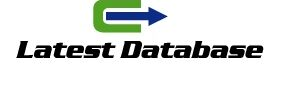Account-Based Marketing (ABM) argentina phone number list
isn’t just a buzzword; it’s a game-changer for B2B marketers. Imagine focusing your energy on the accounts most likely to convert instead of casting a wide net and hoping for the best.
Sounds ideal, right? That’s exactly what ABM offers—a strategic, personalized approach to winning high-value accounts.
But here’s the catch: ABM campaigns require precision, coordination, and a lot of moving parts. Without a clear structure, even the best ideas can fall apart.
That’s where ABM templates come to the rescue. Think of them as your toolkit—designed to simplify planning, streamline execution, and measure success effectively.
In this blog, we’ll dive into the must-have ABM templates that make your campaigns not only manageable but also incredibly impactful. Whether you’re just getting started or refining your strategy, these templates will help you stay organized and focused on what matters most—delivering results.
Why Use ABM Templates?
ABM templates are more than demystifying sales pipeline velocity: meaning, formula, and key steps for driving more revenue
organizational tools—they’re the backbone of efficient and impactful campaigns. Here’s why they’re crucial:
- Efficiency: Templates reduce time spent reinventing the wheel for every campaign.
- Consistency: They ensure alignment between marketing and sales teams.
- Measurability: Structured templates make tracking ROI easier and more accurate.
Using a pre-built account-based marketing strategy template can be the difference between success and wasted effort.
Templates should include sections for identifying and prioritizing accounts. Include account details like industry, size, and key decision-makers, as well as buying signals like intent data or recent funding announcements.
Understanding the stakeholders within your target accounts is critical. Your template should provide space to outline the needs, challenges, and objectives of each persona within the account.
Personalized Content Strategy
ABM relies heavily europe email
on personalization. Templates should include prompts for brainstorming content that resonates with the account’s unique needs. Examples: personalized emails, industry-specific whitepapers, or tailored case studies.
Your template should list the channels used to reach your target accounts, such as LinkedIn, email, direct mail, and webinars. Ensure the plan aligns with where your target audience spends their time.
The success of an ABM campaign hinges on data. Your template should include sections to track metrics such as engagement rates, pipeline velocity, and revenue impact.
To implement a successful Account-Based Marketing (ABM) strategy, a variety of templates are required to address each stage of the process, from planning and execution to reporting. Here’s a detailed explanation of each type:
A high-level framework designed to provide an overview of your ABM campaign.
Purpose:
- Ensure clarity on campaign goals, timelines, budgets, and target accounts.
- Align all stakeholders before the campaign begins.
Example Template Components:
- Objectives: Increase revenue from top 50 accounts by 30% within six months.

